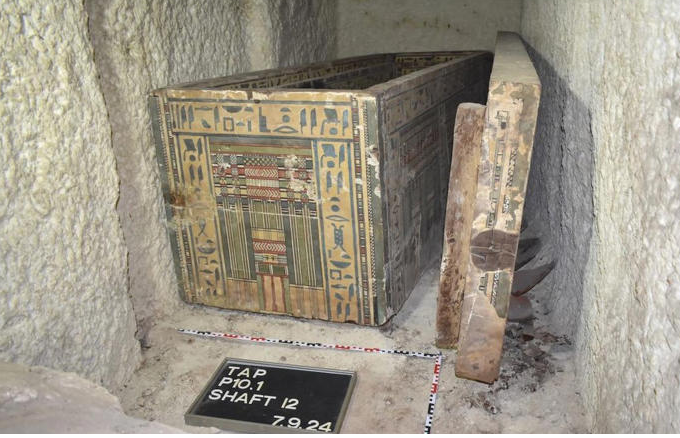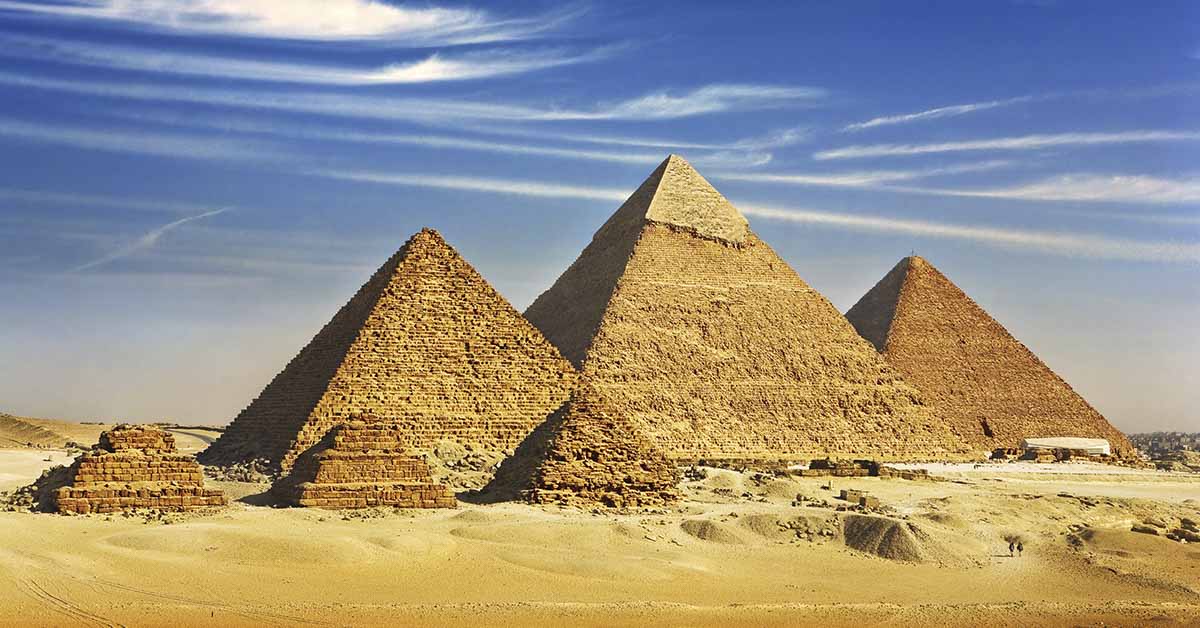In October 2024, a team of international researchers led by Jochem Kahl, professor of Egyptology at Freie Universität Berlin, made a significant discovery. The researchers found a burial chamber belonging to the daughter of Djefaihapi I in the necropolis of Asyut, Egypt. Eventually unearthed following two decades of fieldwork, the burial chamber was discovered in a section of the monumental tomb that was previously inaccessible to archeologists. Found hidden at the bottom of a 45-foot deep shaft behind a quarry stone wall, the burial chamber contained an exquisitely decorated coffin and other Egyptian artifacts.
The Unearthing of The Hidden Egyptian Artifacts

Situated along the River Nile, excavations have been ongoing at the necropolis of Asyut since 2003. Excavation of this particular shaft began in 2022, comprising three excavation campaigns. These excavations culminated in the discovery of incredible Egyptian artifacts, such as two decorated coffins that fit inside each other, as well as other burial goods. This includes a chest containing jars filled with the mummy’s vital organs, such as her lungs, spleen, liver, and intestines.
The ancient chamber has been dated to approximately 1880 BCE, and much of the burial goods were found undisturbed. However, grave robbers have looted the site in ancient times, likely removing any metal objects and jewelry. Among the Egyptian artifacts remaining in the burial chamber were a dagger, food offerings to the gods, pharaonic insignia, and various wooden figurines. According to the inscriptions on the coffins, the burial chamber belonged to a priestess of Hathor, the goddess.
Her name was Idy, and she held the honorary title of “Lady of the House”. The inscriptions also retold the soul’s journey into the afterlife. While the remnants of the mummy had been somewhat destroyed by looters, there were still pieces of her clothing and bones left in the coffin itself. According to the researcher’s initial examinations, it appears that the woman was around 40 years old at the time of death. They also found that she suffered from a congenital defect in one of her feet. However, they have not yet been able to determine the cause of her death.
An Individual of Exceptional Status and Rank

Based on her title and elaborate burial, the researchers believe that she must have been highly regarded by the ancient Egyptian court. Her chamber formed part of her father’s tomb, a figure that also held a significant position in Egyptian society at the time. Her father, Djefaihapi, was an official of high-ranking status during the reign of Senusret I. Djefaihapi I was highly revered in antiquity, and his tomb played an important part in ancient Egypt’s cultural memory for more than 2000 years. These promising findings have been encouraging for those involved in the ongoing excavations of the tomb.
The international effort involved researchers from Sohag University in Egypt, the Free University of Berlin, the Polish Academy of Sciences, and Kanazawa University in Japan. All of the Egyptian artifacts discovered so far have been given to the Egyptian Ministry of Tourism and Antiquities. There is still so much the site will reveal about the ancient Egyptian world. For example, the wealth of inscriptions includes religious texts that will provide new insights into women’s roles and knowledge transfer in ancient Egypt. The city of Ayut has over 5,000 years of history to still be uncovered and interpreted, making these findings a vital part of gaining the overall picture of ancient Egyptian life.

